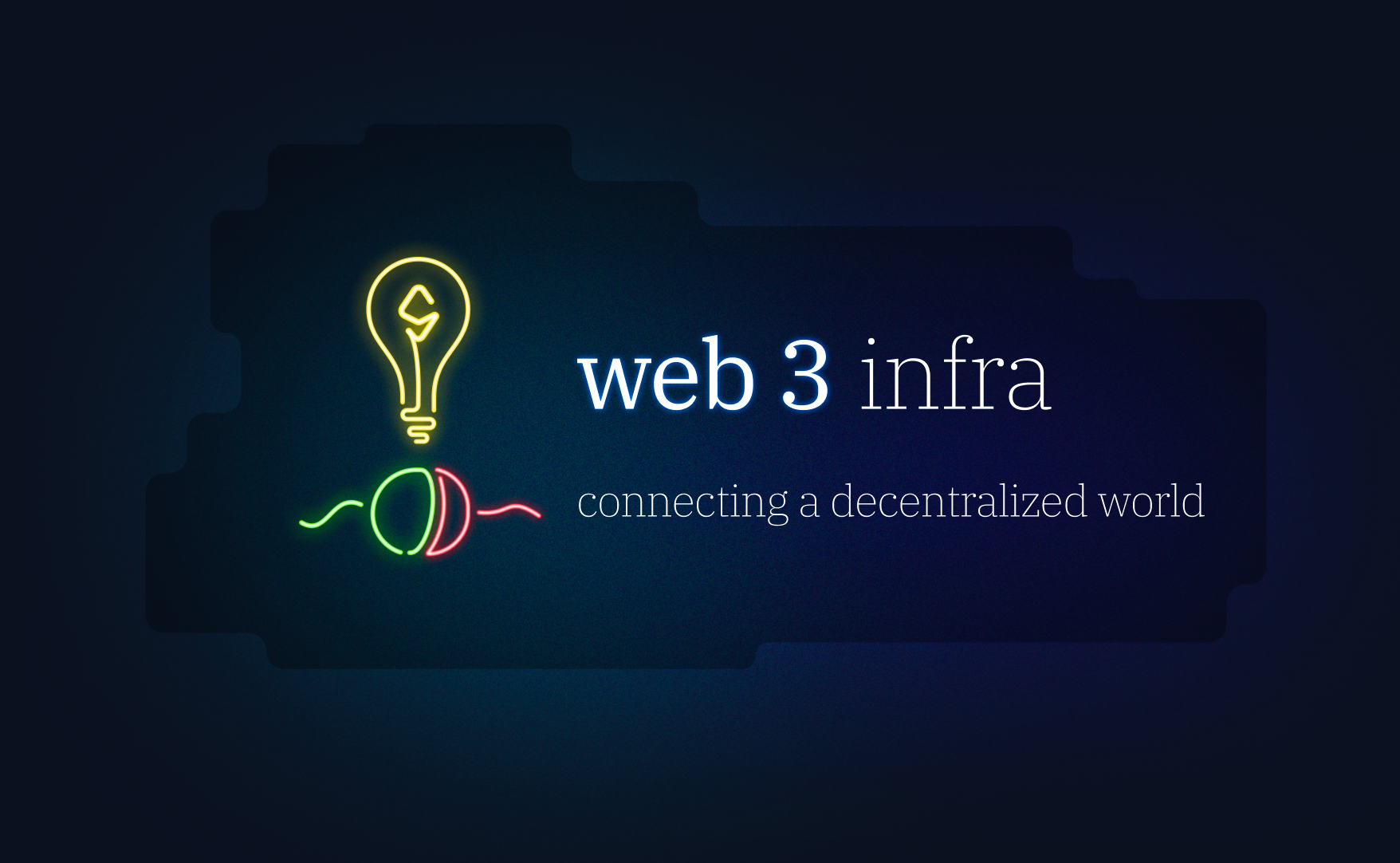Web 3 infrastructure: The search for a connected decentralized world

Web 3 came to slash the dominance of Web 2 players and show how it is possible to build an open, decentralized, and fair new economy for everyone.
Web 2 has been standing on the shoulders of users and creators, with little rewards for people on top of the misuse of personal data, security issues, and even social implications.
How is Web 3 different?
With Web 3, the user is intrinsically part of the ecosystem, linked to the growth of the protocols, the reward mechanism, and even the governance.
In a world where people want to have a close relationship and aligned interest with the companies and products they engage with, Web 3 is the natural evolution of the marketplace, reaching every sector, from art to finance.
Is Web 3 infrastructure ready for the mainstream appeal?
Let’s look at the current Web 3 landscape.
On one side, we have the networks enabling a new way to build on top of Bitcoin, Ethereum, and other networks. On the opposite spectrum, we have all the applications that mix many of the concepts seen on Web 2 but build under Web 3 technology, tokenomics, and principles (e.g., NFT marketplaces).
The middle? The connecting piece between applications and layer networks. In other words, Web 3 infrastructure.
Some of the biggest challenges for Web 3’s future include enabling an easy onboarding experience for users, supporting a multi-chain future, and guaranteeing attractive and diversified investment flows.
The road for adoption: Simplicity, cross-chain support, and efficiency
Research estimates that more than half of the global cloud infrastructure relies upon centralized services like Amazon’s AWS or Microsoft’s Azure. In 2021, the total revenue from cloud infrastructure service revenue crossed $175B.
Centralized alternatives pose high costs and monetary challenges beyond the increased security risk due to single points of failure.
The decentralized revolution cannot happen based on centralized services under the actual Web 3 products. The compromise on the centralization front undermines the potential of a new set of truly redistributed products.
For Web 3 infrastructure to be appealing to a wide range of applications, it has to tackle its current challenges. More importantly, fulfilling the ability for applications to move between ecosystems at ease, with low costs and scale, while remaining decentralized.
Web 3 is already a reality
Projects linking the world of Web 3 to developers, applications, and a mainstream audience are already here.
For example, new Layer 2 networks like Polygon, offering scale and low fees. In 2021, Polygon had periods with a higher active user base on its network than Ethereum. Polygon supports more than 19K DApps, quickly becoming a launching pad for new projects, from gaming to finance.
The Graph is another groundbreaking protocol, working on the need to evaluate, streamline, and connect data between agents by enabling the quick deployment of APIs.
By facilitating access to data, The Graph opens the door for a myriad of new solutions between the Web 3 and centralized worlds, boosting the number of use-cases.
Across sectors, Web 3 providers are creating the building blocks for a new era. For example, Livepeer is building a decentralized video infrastructure for all, enabling the evolution of streaming networks for more autonomy between participants and creators.
Filling the gap between capital efficiency and Web 3
Web 3 infrastructure is linked to its token economy, creating a new growth potential.
From a capital efficiency point of view, Web 3 infrastructure providers need more flexibility and use-cases from their tokens and a wider ecosystem that allows them to diversify and protect investments/working capital.
Web 3 tokenomics opens a great opportunity, but until now, many protocols had limitations on the use-cases for their capital.
Projects like Tenderize are introducing derivatives based on Web 3 tokens, enabling a wide range of financial vehicles within a decentralized environment, boosting flexibility and capital allocation.
With Tenderize, Web 3 protocols can utilize their original tokens to generate TenderTokens (derivatives converted on a 1:1 basis) and stake those TenderTokens for rewards while using their original holdings in other vehicles with full flexibility.
Tenderize can do this by introducing a liquid staking model using derivatives, opening up the use cases for Web 3 protocols while offering no-lock-up periods on its vehicles.
From there, protocols and individuals can even expand their returns by providing liquidity or farming SWAP tokens for extra TenderToken rewards, all in a decentralized ecosystem.
Ready for the new age of Web 3 capital efficiency? Check out this tutorial and start staking!
